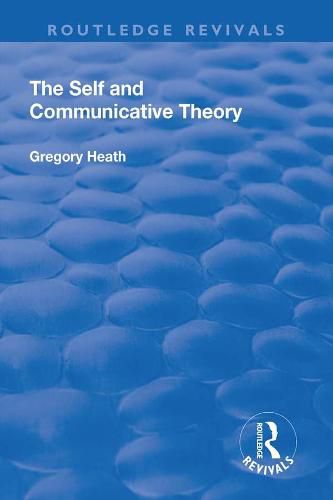Readings Newsletter
Become a Readings Member to make your shopping experience even easier.
Sign in or sign up for free!
You’re not far away from qualifying for FREE standard shipping within Australia
You’ve qualified for FREE standard shipping within Australia
The cart is loading…






This title was first published in 2000: This text contributes to the development of communicative theory by advancing a theory of the self-sufficient to support intersubjectivity and meet the conditions required for communicative rationality and communicative reason. The conclusion supports theories advanced by Habermas, Apel and Wittgenstein, evaluated against the background of later works from Immanuel Kant. The origins of communicative theory in the writings of Kant and Charles Sanders Peirce are sketched, followed by an outline of the development of the theory by Apel and Habermas. In this discussion a central issues is identified as the failure of communicative theory to produce an adequate theory of the self as the subject of communicative transactions. It is argued that both Mead and Habermas fail to fully establish intersubjectivity as they retain elements of a Cartesian introspective subjectivity. An alternative approach, developed by Charles Taylor, is then discussed. Finally, it is argued that freedom and imagination, understood in the context of Kant and the late Wittgenstein are the key elements to a self capable of supporting the intersubjectivity required by communicative theory.
$9.00 standard shipping within Australia
FREE standard shipping within Australia for orders over $100.00
Express & International shipping calculated at checkout
This title was first published in 2000: This text contributes to the development of communicative theory by advancing a theory of the self-sufficient to support intersubjectivity and meet the conditions required for communicative rationality and communicative reason. The conclusion supports theories advanced by Habermas, Apel and Wittgenstein, evaluated against the background of later works from Immanuel Kant. The origins of communicative theory in the writings of Kant and Charles Sanders Peirce are sketched, followed by an outline of the development of the theory by Apel and Habermas. In this discussion a central issues is identified as the failure of communicative theory to produce an adequate theory of the self as the subject of communicative transactions. It is argued that both Mead and Habermas fail to fully establish intersubjectivity as they retain elements of a Cartesian introspective subjectivity. An alternative approach, developed by Charles Taylor, is then discussed. Finally, it is argued that freedom and imagination, understood in the context of Kant and the late Wittgenstein are the key elements to a self capable of supporting the intersubjectivity required by communicative theory.